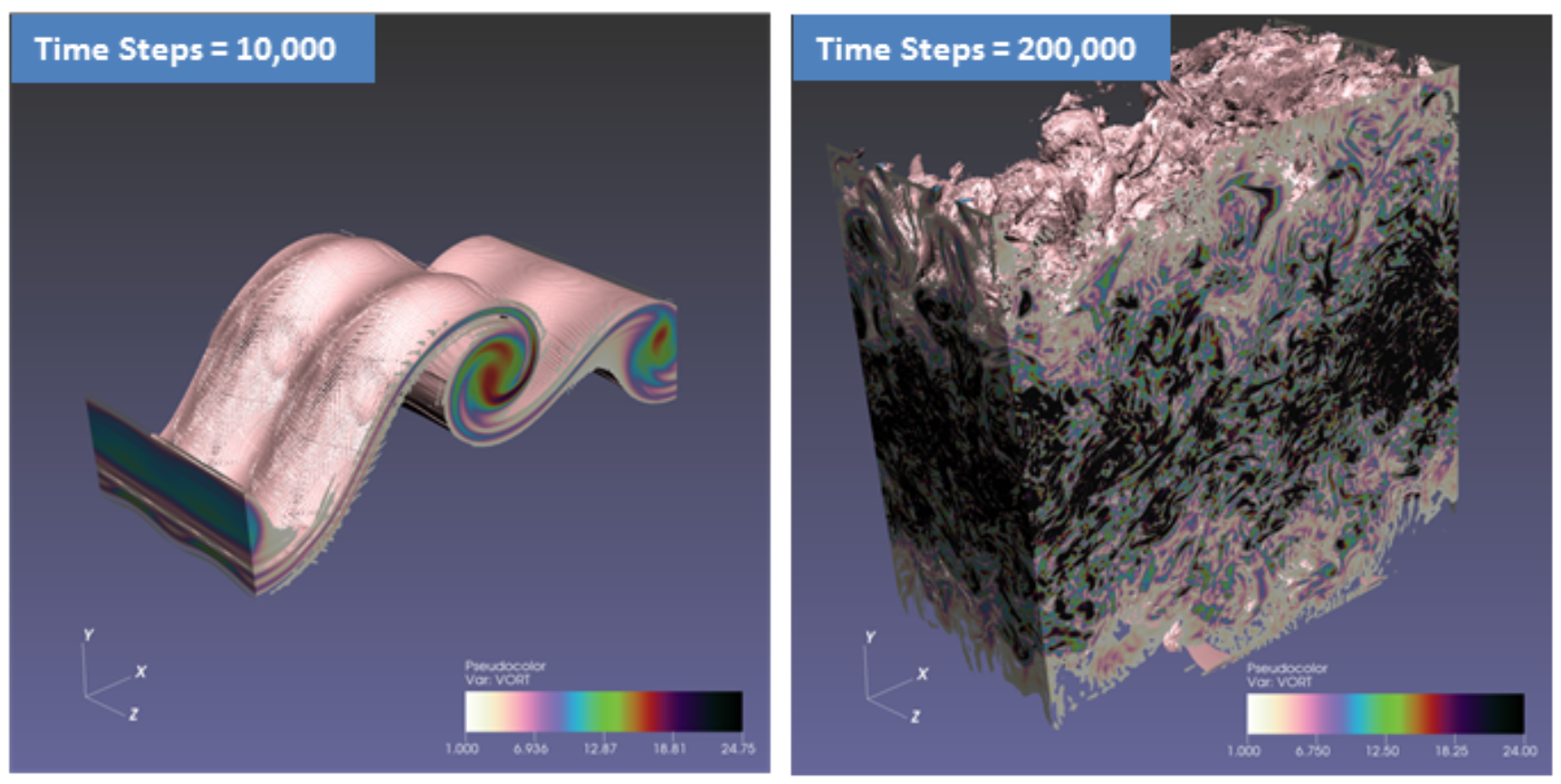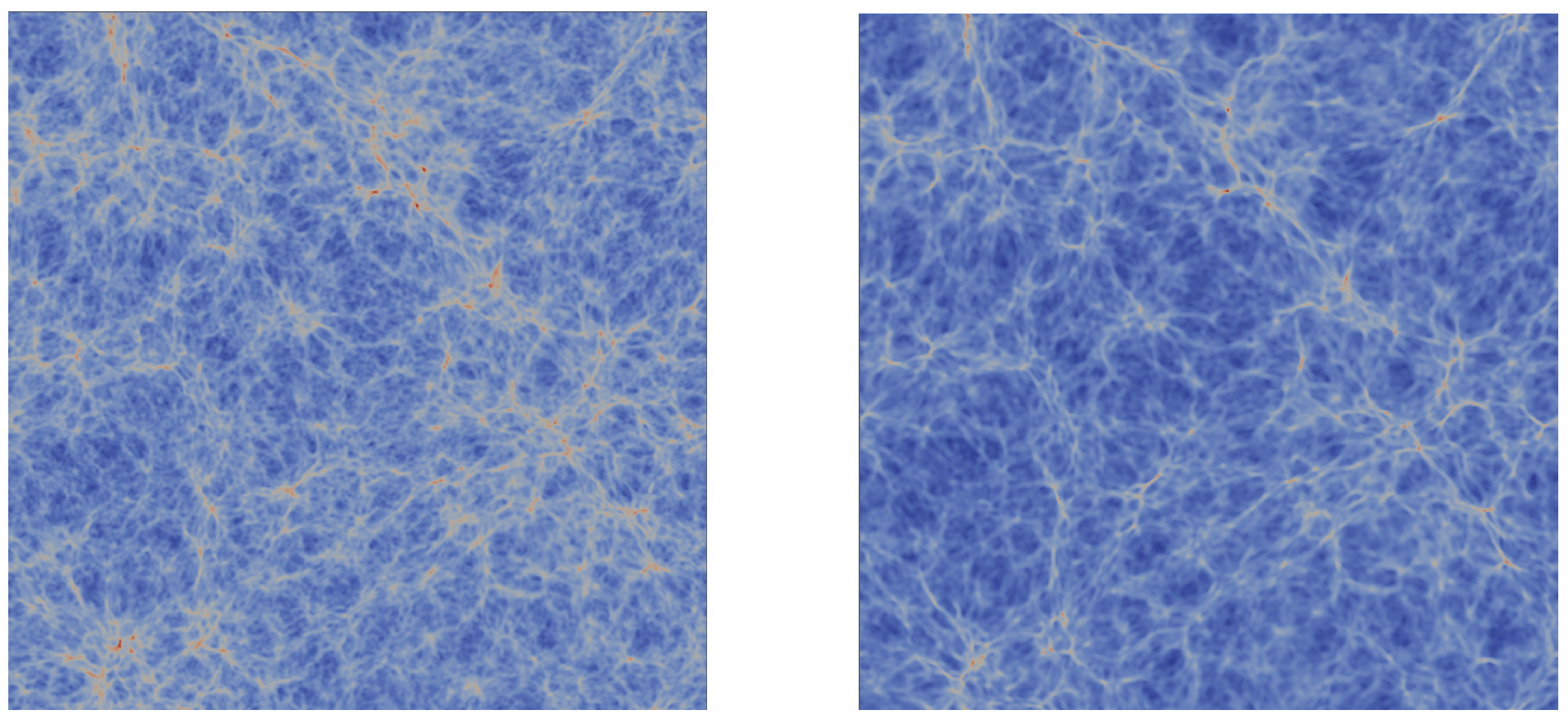11. Performance Analysis, Design Considerations, and Applications of Extreme-scale In Situ Infrastructures¶
Utkarsh Ayachit, Andrew Bauer, Earl P. N. Duque, Greg Eisenhauer, Nicola Ferrier, Junmin Gu, Kenneth E. Jansen, Burlen Loring, Zarija Lukic , Suresh Menon, Dmitriy Morozov, Patrick O’Leary, Reetesh Ranjan, Michel Rasquin, Christopher P. Stone, Venkat Vishwanath, Gunther H. Weber, Brad Whitlock, Matthew Wolf, K. John Wu, and E. Wes Bethel
11.1. Full Text¶
Link to the full text PDF.
11.2. Abstract¶
A key trend facing extreme-scale computational science is the widening gap between computational and I/O rates, and the challenge that follows is how to best gain insight from simulation data when it is increasingly impractical to save it to persistent storage for subsequent visual exploration and analysis. One approach to this challenge is centered around the idea of in situ processing, where visualization and analysis processing is performed while data is still resident in memory. This paper examines several key design and performance issues related to the idea of in situ processing at extreme scale on modern platforms: scalability, overhead, performance measurement and analysis, comparison and contrast with a traditional post hoc approach, and interfacing with simulation codes. We illustrate these principles in practice with studies, conducted on large-scale HPC platforms, that include a miniapplication and multiple science application codes, one of which demonstrates in situ methods in use at greater than 1M-way concurrency.
11.3. Mini-Application¶
As a prototypical data source, we implemented a miniapplication, an MPI code in C++, that simulates a collection of periodic, damped, or decaying oscillators. Placed on a grid, each oscillator is convolved with a Gaussian of a prescribed width. The oscillator parameters are specified as the input, which is read and broadcast from the root process. The user also specifies the time resolution, duration of the simulation, and the dimensions of the grid, partitioned between the processes using regular decomposition. The code iteratively fills the grid cells with the sum of the convolved oscillator values; the computation on each rank takes O(mN3) per time step, where m is the number of oscillators and N3 is the size of the subgrid on the rank. The computation is embarrassingly parallel; optionally, the ranks may synchronize after every time step, but this synchronization is off in the experiments below.
11.4. Pipelines¶
The miniapplication test configurations, listed below, show the various combinations of the oscillator miniapplication, in situ the ParaView/Catalyst, VisIt/Libsim, and ADIOS infrastructures, different in situ analysis methods, and with/without use of the SENSEI data interface.
| Pipeline | Description |
|---|---|
| Original | miniapplication with no SENSEI interface and no I/O. In some test configurations, we do perform in situ analysis, but that coupling is done directly via subroutine call and does not use any in situ interface. The distinction of with vs. without analysis will be called out when needed in the subsections that follow. |
| Baseline | miniapplication with SENSEI interface enabled, but no in situ analysis or I/O. This configuration is useful in measuring the overhead of the SENSEI data interface in isolation from other processing. |
| Histogram | miniapplication with the SENSEI interface enabled, and connected directly to an in situ histogram calculation, but without any of the in situ infrastructures. |
| Autocorrelation | miniapplication with the SENSEI interface enabled, and connected directly to an in situ autocorrelation calculation, but without any of the in situ infrastructures. |
| Catalyst-slice | miniapplication with SENSEI interface enabled, and connected to Catalyst, which performs in situ rendering of a 2D slice from a 3D volume, then writes the image to disk. |
| Libsim-slice | miniapplication with SENSEI interface enabled, and connected to Libsim, which performs in situ rendering of a 2D slice from a 3D volume, then writes the image to disk. |
| ADIOS-FlexPath | miniapplication with SENSEI interface en- abled, and connected to the ADIOS FlexPath in situ infrastructure. Within this miniapplication/in situ infrastructure combination, we further refine the configuration in §§4.1.4 to include in situ workloads for histogram, autocorrelation, and Catalyst-slice. |
11.5. Science Application Examples¶

Fig. 11.1 Computational Fluid Dynamics - The Evolution of Temporal Mixing Layer from Initial to Vortex Breakdown using AVF-LESLIE.

